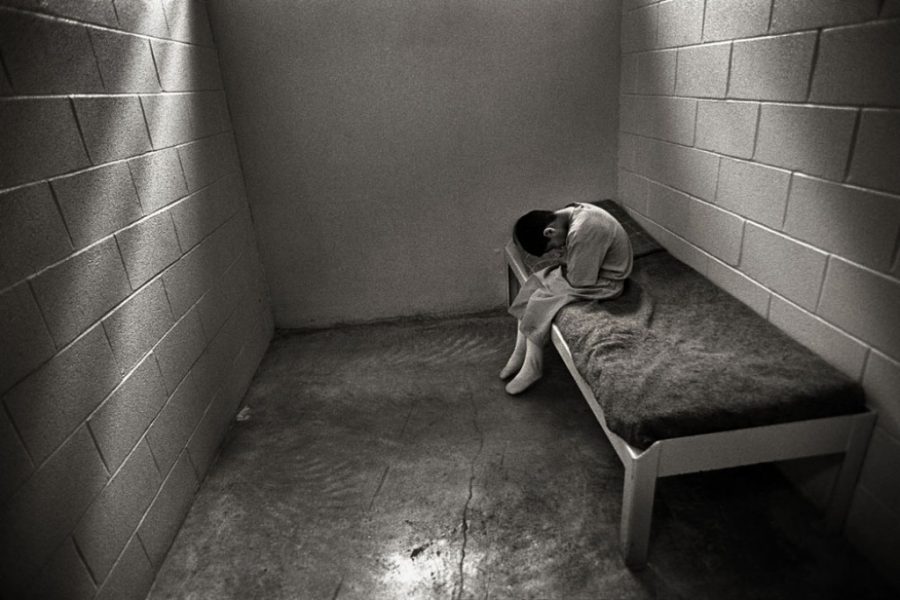Solitary Confinement Isn’t Solving Problems
For years, the use of solitary confinement has been criticized and debated. The practice dates back all the way to the early nineteenth century, and there are serious risks that come from the practice. The psychological effect of the practice on prisoners serves as one of the main criticisms, but there are plenty of other reasons to believe solitary confinement should not be used in America’s prisons.
The first use of solitary confinement took place is 1829 in Philadelphia. According to NPR, it was a inspired by a Quaker belief that people held in solitary with access to a bible would use their time to pray. Many of the prisoners in this first use ended up committing suicide, or developing mental health issues that made it difficult for them to function “normally.” The practice became extremely rare until 1934 when Alcatraz was opened by the government, where some prisoners spend years in solitary confinement. In 1983, the first prison adopts a 23-hour-a-day cell isolation for prisoners put into solitary.
The practice has only grow from there, leading us to today, where the practice of solitary continues to increase. A study done a few years ago found that over 80,000 prisoners were serving time in solitary, but the number is estimated to be over 100,000 currently. While the actual aspects of solitary confinement varies from state to state, many cruel aspects remain the same throughout different prisons. One things remains the same throughout all states: prisoners experience long spans of time without contact from any other people. And, according to the Southern Poverty Law Center, most prisons place prisoners in solitary confinement for 22-24 at a time, and allowed very little time outside of the often small cell. Again, the actual cell sizes range from state to state, though the average is around 10 by 7 feet, which is only a few feet larger than the average queen size bed. Not only are solitary cells extremely small, but they can also cause extreme mental health problems for prisoners.
In 1950, a study to determine the effects of solitary confinement was performed on monkeys. After only two days the monkeys assumed positions to suggest they felt hopeless. By a year in, the psychologist performing the experiment noted that the “isolation almost obliterated the animals socially.” Some prisoners spend well over a year in solitary, so it’s only logical to assume the time serves to provide serious mental damage. According to PBS, at least one-third of solitary inmates are “actively” suicidal or psychotic, and many inmates also experience hallucinations. Since solitary can seriously increase suicidal behavior, 65% of all suicides that take place in prison are caused by a experiences in solitary confinement. Similarly to the death penalty, many people have argued that it intrudes on the Eighth Amendment which prohibits cruel and unusual punishment. With many prisoners that have been in solitary describing the practice as “torture,” its fairly hard to conclude that the practice doesn’t intrude on the Eighth Amendment.
Since solitary is form of punishment in prison, it’s logically a form of “deterrent” for criminals. While supporters argue it does actually deter people from committing crimes and misbehaving in prison, the evidence shows that this isn’t true. According to the American Civil Liberties Union, prisoners released directly from solitary are 61% more likely to reoffend within three years of their release. Solitary can also increase the likelihood of a former prisoner to commit a violent crime. 24.2% of inmates released from solitary confinement commit violent crimes, which is over 4% higher than the “average” inmates.
Overall, solitary confinement comes with so many more risks than benefits. In fact, there are pretty much no benefits to solitary at all. The practice is inhumane, and leaves prisoners with lifelong mental issues. The practice is just another example of America’s criminal justice system valuing punishment over rehabilitation, and the health of prisoners.
Your donation will support the student journalists of The Tower and John Adams High School. Your contribution will allow us to purchase equipment and cover our annual website hosting costs.

Sierra Weaver, a senior at John Adams, is the Editor-in-Chief of The Tower. She has been a part of The Tower since she was a freshman, and looks forward...







